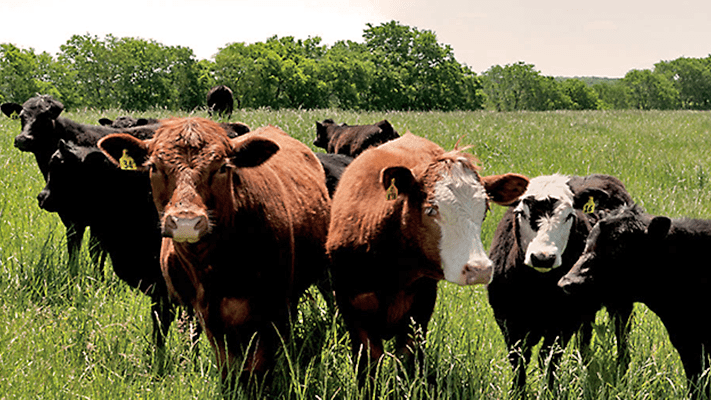Constance Cattle: Unlocking Potential Profits in Sustainable Livestock Farming
Constance Cattle: Unlocking Potential Profits in Sustainable Livestock Farming
Blog Article
Master the Art of Cooking With Turf Fed Meat
In the realm of cooking proficiency, grasping the art of cooking with grass-fed meat holds a respected position. From the tender structure to the durable taste account, grass-fed meat presents a canvas for culinary imagination.
Advantages of Grass-Fed Meat

When picking grass-fed meat, customers can benefit from its higher degrees of omega-3 fats and anti-oxidants contrasted to traditionally elevated meat. Constance Cattle. Omega-3 fats are vital nutrients that sustain mind health and wellness, lower swelling, and advertise heart health and wellness. Grass-fed meat is understood to have up to five times much more omega-3 fatty acids than grain-fed meat, making it a healthier choice for those looking to increase their consumption of these advantageous fats
Along with omega-3 fatty acids, grass-fed meat is additionally richer in anti-oxidants such as vitamins E and C, in addition to beta-carotene. Antioxidants play a critical function in safeguarding cells from damage triggered by totally free radicals, which can contribute to numerous persistent illness and accelerate aging. By opting for grass-fed meat, customers can not only enjoy a more nutrient-dense and savory healthy protein source but additionally support their overall wellness and wellness.
Incorporating grass-fed meat right into your diet plan can be a simple yet reliable method to enhance your dietary intake and profit of omega-3 fats and anti-oxidants that are naturally abundant in this kind of meat.
Finest Cooking Approaches
Using ideal cooking approaches is important to preserve the nutrient account and enhance the flavor of grass-fed meat. When cooking grass-fed meat, it is important to bear in mind that it is leaner than conventionally elevated meat, making it more vulnerable to drying out if overcooked. To make sure a juicy and flavorful result, consider cooking grass-fed meat at somewhat reduced temperatures than you would with grain-fed meat.
Barbecuing is a preferred method for food preparation grass-fed meat as it permits excess fat to leak away, protecting against flare-ups that can cause charring. When barbecuing grass-fed meat, usage medium heat and maintain a close eye on it to stop overcooking. One more wonderful cooking technique for grass-fed meat is pan-searing. This approach helps seal in the juices and produce a scrumptious crust on the meat.
Sluggish cooking techniques such as braising or stewing are also superb options for tougher cuts of grass-fed meat, as they help break down the muscle mass fibers and tenderize the meat. Whichever food preparation method you select, bear in mind to allow grass-fed meat remainder after cooking to enable the juices to redistribute, ensuring a moist and tender final meal.
Flavor Pairings and Seasonings
To improve the natural flavors of grass-fed meat, strategic taste pairings and flavorings play a critical function in raising the general dining experience. Grass-fed meat has an abundant, unique taste that can be enhanced and boosted by very carefully chosen ingredients.
Along with natural herbs, spices such as black pepper, garlic, and smoked paprika can further boost the taste account of grass-fed meat meals. These spices give a balance of heat, sweet taste, and smokiness that can enhance the total dining experience. When flavoring grass-fed meat, it is important to utilize high-quality salt, like sea salt or Himalayan salt, to highlight the meat's flavors without including unnecessary chemicals or ingredients.
Storage and Taking Care Of Tips
Appropriate storage space and handling methods are important for keeping the high quality and quality of grass-fed meat. When storing grass-fed meat, it is critical to keep it cooled at temperatures listed below 40 ° F(4 ° C) to prevent microbial growth and perishing. To prolong the meat's rack life, consider covering it tightly in parchment paper or butcher paper before positioning it in an airtight container or sealed plastic bag - Constance Cattle. Stay clear of storing grass-fed meat near strong-smelling foods as it can take in odors easily.
When handling grass-fed meat, it is very important to exercise good health to prevent cross-contamination. Laundry your hands thoroughly before and after dealing with the meat, and make certain that all utensils and surface areas that enter call with the meat are cleaned up and sanitized correctly. In addition, make use of different cutting boards for meat and veggies to avoid bacterial transfer.

Leading Grass-Fed Meat Recipes
When considering the best ways to savor the high quality and quality of grass-fed meat, discovering first-class recipes can elevate your culinary experience. Grass-fed meat's rich taste and leaner profile lend themselves well to a variety of dishes that highlight the natural benefits of the meat.
If you're in the click for source mood for something lighter, a Grilled Grass-Fed Hamburger offered with fresh garnishes and a side of wonderful potato french fries is a tasty option. In addition, a Herb-Crusted Grass-Fed Lamb ribs roasted to excellence with a medley of breadcrumbs and natural herbs is a show-stopping meal for special celebrations. These top grass-fed meat dishes showcase the versatility and exceptional quality of grass-fed meat, allowing you to appreciate its superior taste in numerous cooking developments.

Conclusion
Finally, understanding the art of cooking with grass-fed meat uses various advantages, including boosted nutritional worth and superior flavor. By utilizing the most effective cooking techniques, explore taste pairings and spices, and adhering to correct storage and managing suggestions, you can create tasty and healthy dishes. Experiment with some leading grass-fed meat recipes to boost your cooking skills get redirected here and appreciate the full possibility of this high-quality active ingredient.
When cooking grass-fed meat, it is crucial to bear in mind that it is leaner than conventionally increased meat, making it extra prone to drying out if overcooked. To ensure a juicy and flavorful outcome, take into consideration cooking grass-fed meat at a little lower why not try this out temperatures than you would with grain-fed meat.
When flavoring grass-fed meat, it is essential to make use of top quality salt, like sea salt or Himalayan salt, to bring out the meat's tastes without adding unneeded chemicals or ingredients.
Grass-fed meat's rich taste and leaner profile offer themselves well to a selection of dishes that highlight the all-natural goodness of the meat. These top grass-fed meat dishes display the versatility and exceptional quality of grass-fed meat, permitting you to appreciate its superior taste in numerous cooking creations.
Report this page